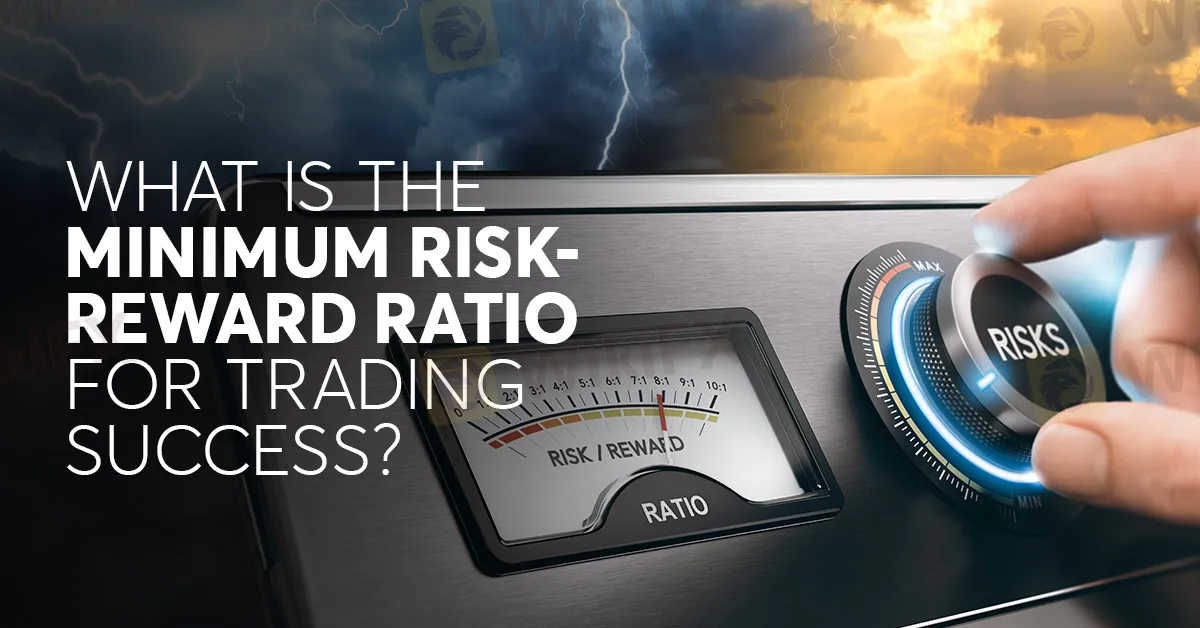简体中文
繁體中文
English
Pусский
日本語
ภาษาไทย
Tiếng Việt
Bahasa Indonesia
Español
हिन्दी
Filippiiniläinen
Français
Deutsch
Português
Türkçe
한국어
العربية
What is The Minimum Risk-Reward Ratio for Trading Success?
Abstract:What exactly is the minimum risk-reward ratio that traders should aim for to achieve success?

In the world of forex trading, success is often measured by the ability to navigate the intricate balance between risk and reward. Understanding and implementing an effective risk-reward ratio can be the cornerstone of a trader's strategy, determining the difference between profitability and losses. But what exactly is the minimum risk-reward ratio that traders should aim for to achieve success?
The risk-reward ratio is a fundamental principle that quantifies the potential profit against the potential loss in a trade. It represents the relationship between the amount a trader is willing to risk (stop-loss) compared to the potential reward (take-profit). A risk-reward ratio of 1:2, for example, means risking one unit to potentially gain two units.
While there isn't a one-size-fits-all minimum risk-reward ratio that guarantees success, a commonly recommended ratio is 1:2 or higher. Here's why:
Successful trading isn't just about making profits; it's about managing risk effectively. A favourable risk-reward ratio helps traders to mitigate losses and preserve capital. By setting a ratio where the potential reward is at least twice the risk, traders can maintain profitability even if they're right only half the time.
Consistency is key in trading. A sound risk-reward ratio provides a framework for consistent decision-making. It encourages disciplined trading, allowing traders to stick to their strategy without being swayed by emotions or impulsive actions.

Market conditions are dynamic, and volatility is inherent in the forex market. A risk-reward ratio of 1:2 or higher allows traders to adapt to varying market conditions. In highly volatile markets, a wider ratio might be more suitable to accommodate larger price swings.
While a 1:2 risk-reward ratio is often recommended, traders should consider their individual trading styles, risk tolerance, and the specific market they're trading in. Some traders might opt for a higher ratio, like 1:3 or 1:4, depending on their risk appetite and the prevailing market conditions.
Besides the risk-reward ratio, implementing effective risk management practices is crucial. This includes setting stop-loss orders, diversifying your portfolio, avoiding over-leveraging, and continuously monitoring and adjusting your strategy.
While aiming for a minimum risk-reward ratio of 1:2 is a prudent guideline, successful trading encompasses a multitude of factors beyond this ratio alone. It's essential to remember that trading involves inherent risks, and no ratio can guarantee success. Traders must combine their risk-reward ratio with a comprehensive strategy, market analysis, and disciplined execution to achieve success in the forex market.
Ultimately, each trader should find a risk-reward ratio that aligns with their trading goals, risk tolerance, and market conditions, acknowledging that adaptability and continuous learning are key to navigating the ever-evolving landscape of forex trading.

Disclaimer:
The views in this article only represent the author's personal views, and do not constitute investment advice on this platform. This platform does not guarantee the accuracy, completeness and timeliness of the information in the article, and will not be liable for any loss caused by the use of or reliance on the information in the article.
Read more

How to Find the Most Reliable Forex Broker for Trading in 2025
Learn what makes a forex broker reliable in 2025. Explore key features like fast execution, tight spreads, and transparent pricing for smarter trading decisions.

Scammed by a Click: He Lost RM300,000 in a Month
A company director in Malaysia lost over RM300,000 after falling for an online investment scam he found on Facebook.

The Risks of Trading with an Unregulated Broker like Exnova
Trading with unregulated brokers, such as Exnova, exposes traders to numerous risks, including fraud, withdrawal issues, and a lack of client protection. Learn about the dangers associated with these brokers and why it's crucial to choose a licensed, reliable platform.

Manual vs. Automated Forex Trading: Which One Should You Choose?
Both manual and automated forex trading have their strengths and weaknesses. Should you trade manually or use automated systems? Today’s article may give you some clues.
WikiFX Broker
Latest News
Global stock markets are calling Trump's bluff on tariffs
Trump's tariffs overshadow the pomp and pageantry as Macron meets King Charles
Boeing delivers most airplanes since late 2023 after ramping up 737 Max output
Inflation expectations drift back down to pre-tariff levels, New York Fed survey shows
MT4 vs MT5: A comprehensive comparison in terms of functionality
Top Forex Trading Strategies for the London Session
Swissquote Takes Full Control of Yuh Digital Finance App in Major Deal
Top 5 Forex Pairs Every Trader Should Have on Their Radar
What WikiFX Found When It Looked Into Decode Global
Treasury yields rise as Trump's new tariff rates in focus
Currency Calculator


